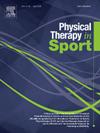Attitudes and practices of Australian healthcare and sports workers on the use of ankle supports for management and prevention of lateral ankle sprains: A cross-sectional survey
IF 2.2
3区 医学
Q1 REHABILITATION
引用次数: 0
Abstract
Objective
Explore attitudes and practices of Australian professionals using ankle taping or bracing for the management and prevention of lateral ankle sprains.
Design
Cross-sectional study.
Setting
Anonymous online survey.
Participants
Australian healthcare or athletic workers, registered with an official governing body, involved in the management and/or prevention of lateral ankle sprains.
Main outcome measures
Quantitative data was collected from 20 close-ended questions. Qualitative data from 14 open-ended questions were categorized into topics using inductive thematic analysis. Data was analysed using descriptive statistics and presented in figures and tabular format.
Results
A total 160 respondents answered the survey; the majority were podiatrists (42.5%), physiotherapists (23%), or sports/athletic trainers (13.8%). Ankle supports were overwhelmingly recommended and considered to be effective in the management (95% and 89% bracing and taping, respectively) and prevention (96% and 92% bracing and taping, respectively) of lateral ankle sprains. For management, semi-rigid brace with straps (26%) and figure eight taping technique (42%) were the most frequently used. For prevention, the most commonly used were soft brace with straps (30%) and the figure eight taping technique (37%).
Conclusions
Australian professionals expressed a positive attitude towards using ankle supports in the management and prevention of lateral ankle sprains.
澳大利亚医护人员和体育工作者对使用踝关节支撑治疗和预防外侧踝关节扭伤的态度和做法:横断面调查
目的探索澳大利亚专业人员在管理和预防外侧踝关节扭伤时使用踝关节绑带或支撑的态度和做法。设计横断面研究。设置匿名在线调查。参与者澳大利亚医疗保健或体育工作者,在官方管理机构注册,参与外侧踝关节扭伤的管理和/或预防。采用归纳式主题分析法对 14 个开放式问题中的定性数据进行主题分类。结果共有 160 名受访者回答了调查,其中大多数是足科医生(42.5%)、物理治疗师(23%)或运动/体育教练员(13.8%)。绝大多数人都推荐使用踝关节支撑,并认为其在治疗(分别为 95% 和 89%)和预防(分别为 96% 和 92%)外侧踝关节扭伤方面效果显著。在治疗方面,最常用的是带绑带的半固定支架(26%)和八字形绑带技术(42%)。结论澳大利亚专业人士对使用踝关节支撑治疗和预防外侧踝关节扭伤持积极态度。
本文章由计算机程序翻译,如有差异,请以英文原文为准。
求助全文
约1分钟内获得全文
求助全文
来源期刊

Physical Therapy in Sport
医学-康复医学
CiteScore
4.50
自引率
8.30%
发文量
125
审稿时长
39 days
期刊介绍:
Physical Therapy in Sport is an international peer-reviewed journal that provides a forum for the publication of research and clinical practice material relevant to the healthcare professions involved in sports and exercise medicine, and rehabilitation. The journal publishes material that is indispensable for day-to-day practice and continuing professional development. Physical Therapy in Sport covers topics dealing with the diagnosis, treatment, and prevention of injuries, as well as more general areas of sports and exercise medicine and related sports science.
The journal publishes original research, case studies, reviews, masterclasses, papers on clinical approaches, and book reviews, as well as occasional reports from conferences. Papers are double-blind peer-reviewed by our international advisory board and other international experts, and submissions from a broad range of disciplines are actively encouraged.
 求助内容:
求助内容: 应助结果提醒方式:
应助结果提醒方式:


